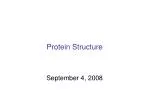
The Classification / Domains tab on the CATH superfamily web pages provides an interactive diagram for exploring all the different types of sequence clusters. Superfamilies are typically described as being diverse in sequence if they have multiple clusters at a sequence identity of 35%. The following are considered in the analysis of domain evolution: Sequence diversity Superfamily relatives are clustered at different degrees of domain sequence similarity: 35, 60, 95 and 100%. Despite high levels of structural diversity, these superfamily members are still observed to share a conserved structural core. The homologous superfamily (H) level of the CATH hierarchical classification groups domains that are related by evolution ( find out more about the classification process).Ī relatively small number of CATH superfamilies have developed high levels of sequence, structural and functional diversity during evolution.


CATH-Gene3D provides information on the evolutionary relationships of protein domains through sequence, structure and functional annotation data.


 0 kommentar(er)
0 kommentar(er)
